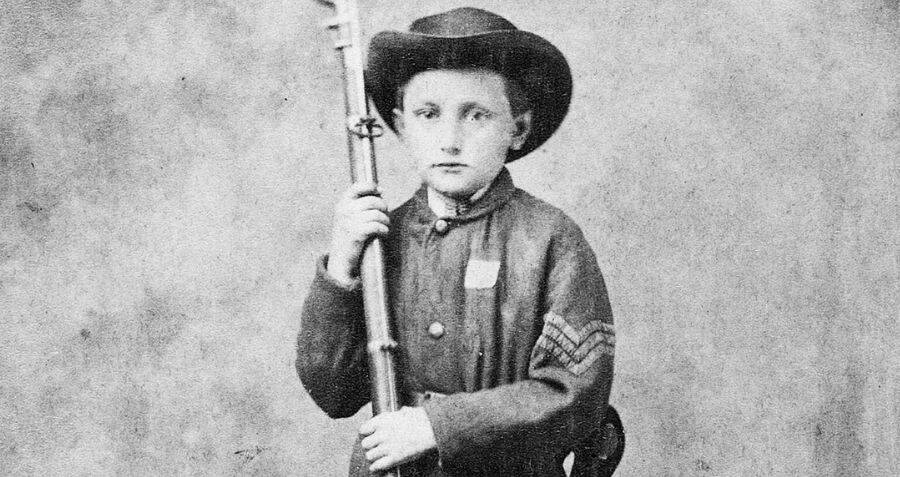
When a Confederate colonel called John Clem a “damned little Yankee devil” and demanded his surrender at the Battle of Chickamauga, John shot him — and became the youngest noncommissioned officer in U.S. Army history.
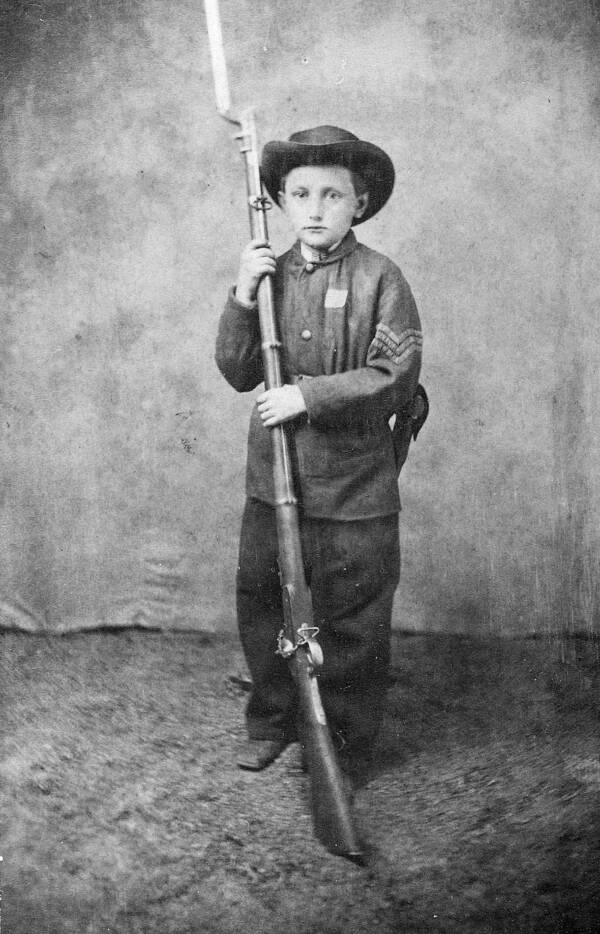
George G. Rockwood/Wikimedia CommonsJohn Clem was barely four feet tall when he joined the Union Army during the Civil War.
In May 1861, U.S. President Abraham Lincoln sent out a national call for volunteers to fight for the Union Army. Many eagerly rose to the occasion, including one unlikely soldier: a nine-year-old boy named John Clem.
Standing at just four feet tall, Clem first tried to volunteer for the 3rd Ohio Infantry Regiment, but he was turned away due to his age. He then pestered the 22nd Michigan Infantry Regiment until they agreed to make him the unit’s unofficial drummer boy. And before long, Clem began making a name for himself.
This is the story of John Clem, the young Civil War soldier known as the “Drummer Boy of Chickamauga.”
How John Clem Became A Soldier
Born in Ohio on Aug. 13, 1851, Clem encountered tragedy at a young age. In 1861, his mother reportedly died in a train accident. When Abraham Lincoln put out the call for Union Army volunteers later that year, the nine-year-old ran away from home in order to enlist.

Wikimedia CommonsBefore his 10th birthday, John Clem convinced a Michigan regiment to adopt him as their unofficial mascot and drummer boy.
According to The New York Times, Clem appealed to an officer he knew in the 3rd Ohio Infantry Regiment. He promised that he could “carry a gun provided it was not too heavy” and beat a drum. Though the officer turned Clem away, the boy wasn’t discouraged, and he next paid a visit to the 22nd Michigan Infantry Regiment.
“You are a game little fellow, all right,” the colonel of the regiment allegedly told him, “but this is no place for children like you. If you were a foot taller and some years older maybe I’d take you along, but as you are neither of those things I am afraid you will have to stay back here with the home folks.”
But Clem persisted — and the 22nd Michigan eventually agreed to let him tag along as their drummer boy. The unofficial position did not come with a salary, but officers of the unit donated part of their wages to pay Clem $13 a month.
Little Johnny Clem, as he became known, was one of tens of thousands of boys who fought in the Civil War. While neither the Union nor Confederate armies officially recruited boys under the age of 18, many children and teens volunteered anyway.

Library of CongressThis portrait of John Clem was taken in Nashville circa 1864.
And while some young boys were kept away from battle with positions as drummers, messengers, and orderlies, many more — like John Clem — saw action on the front lines. In September 1863, the Battle of Chickamauga would turn the 12-year-old into a Union celebrity.
The Drummer Boy Of Chickamauga
Though legends have spread about John Clem at the Battle of Shiloh, it’s unlikely that he saw any action there. Rather, it was at the Battle of Chickamauga that the boy earned his fierce reputation.
Fought in September 1863 in Georgia, the Battle of Chickamauga was the bloodiest battle of the Western Theater and the second bloodiest of the Civil War, behind only Gettysburg, according to the American Battlefield Trust. Of the 455 men in the 22nd Michigan, 389 were captured, wounded, or killed. And John Clem was almost one of them.
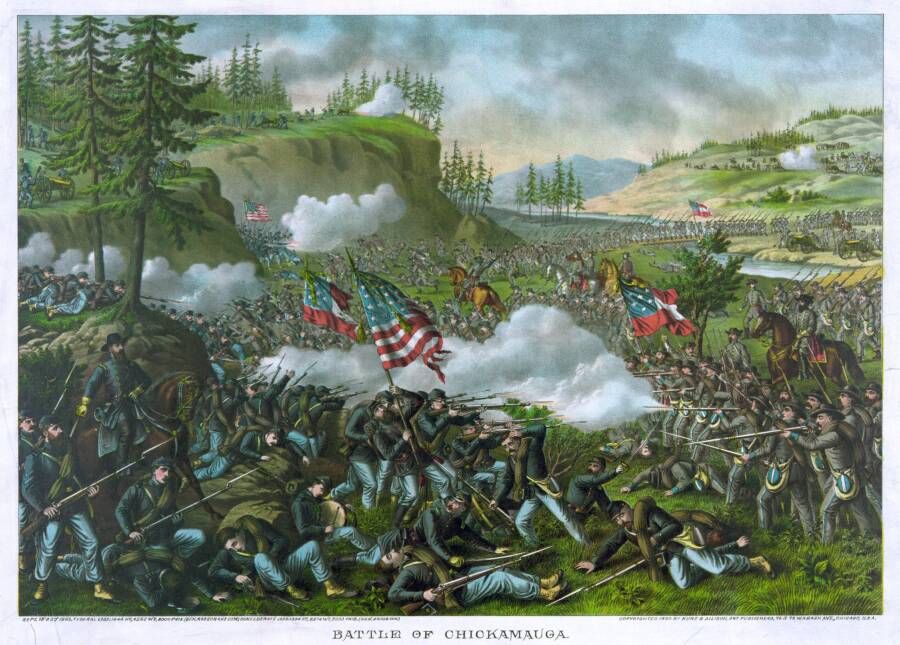
Public DomainThe Battle of Chickamauga, where John Clem made a name for himself, was one of the bloodiest of the Civil War.
While defending Horseshoe Ridge, Clem reportedly became separated from the 22nd Michigan as the regiment was forced to retreat. Armed with only a musket that had been sawed down so that he was able to carry it, Clem ran straight into a Confederate officer.
“My, but you are a little fellow to be in this business,” the officer laughed, according to The New York Times, “but war is war, and I think the best thing a mite of a chap like you can do is to drop that gun.”
Other sources claimed the officer called Clem a “damned little Yankee devil.” But whatever he said, Clem’s reaction was the same. Rather than surrender, Clem raised his modified musket, shot the officer, and ran for his life.
Clem was promoted to sergeant for his bravery. That made John Clem the youngest noncommissioned officer in the history of the U.S. Army — and it also earned him the nickname the “Drummer Boy of Chickamauga.”
But John Clem’s story didn’t end there.
John Clem And The End Of The Civil War
Just weeks after escaping capture at Chickamauga, John Clem found himself cornered by Confederates in Tennessee. His captors held him for three days before sending him north in a prisoner of war exchange.
As he made his way back to the 22nd Michigan, Clem met with Union General William S. Rosecrans, who had been relieved of duty after failing to secure a Union victory at Chickamauga. Impressed with Clem, Rosecrans told newspapers about the young drummer boy, helping spread his story. As the Columbus Daily Express wrote: “The little fellow told his story simply and modestly, and the General determined to honor his bravery.”
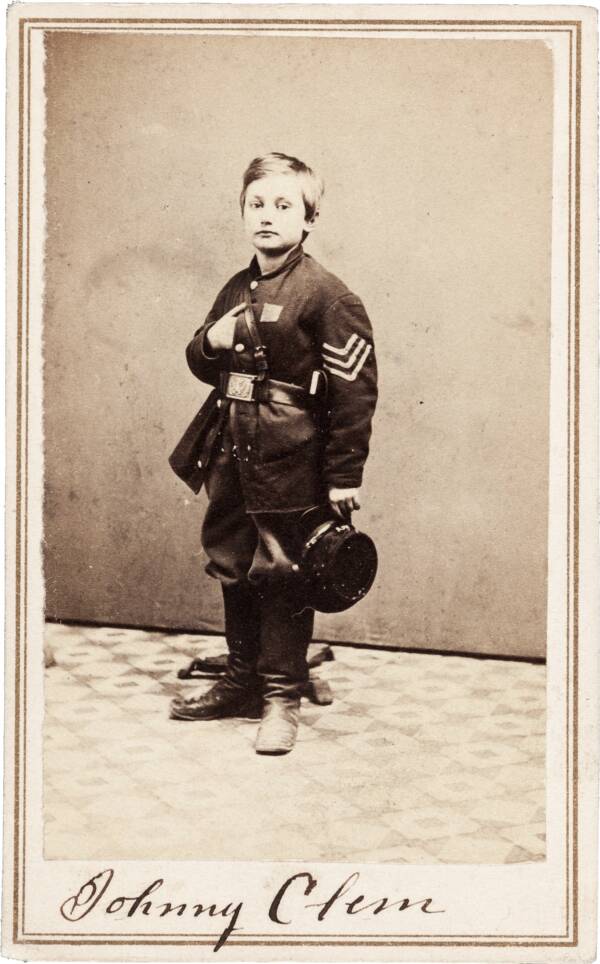
Wikimedia CommonsSigned photographs of John Clem became popular after the Battle of Chickamauga in 1863.
Newspapers across the North quickly spread the tale. Indeed, Clem’s story was one of the only positive spins to put on Chickamauga, where the Union lost the battle and suffered 16,000 casualties.
But Clem’s time as a soldier was drawing to a close. In July 1864, the War Department announced strict penalties for enlisting soldiers under the age of 16. An officer in Clem’s regiment met with the 13-year-old a month later. He officially discharged Clem from service, encouraging the boy to look for “a better opportunity for educating himself.”
Though Clem enrolled in school as he’d been instructed, he stayed in close contact with his friends back in the 22nd Michigan.
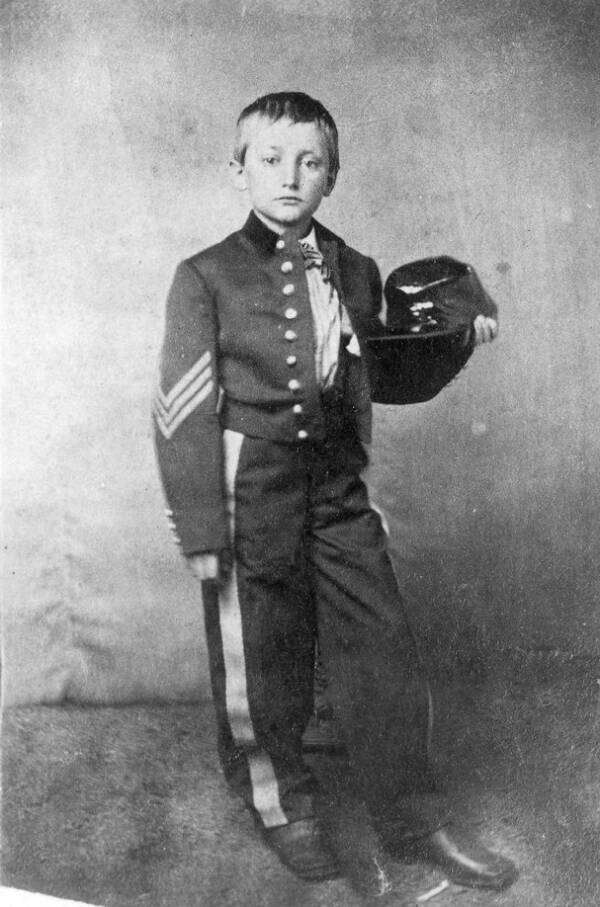
Wikimedia CommonsJohn Clem was captured in 1863, but he was soon released in a prisoner of war exchange.
“I am going to school here and am very much pleased with the institution and my schoolmates,” Clem wrote. “Please tell my Colonel to write to me as soon as he can… If any of the officers are willing to write to me I would be very much pleased to hear from them.”
John Clem’s time in the Army wasn’t over yet, though.
John Clem’s Later Military Career
John Clem graduated high school in 1870, five years after the end of the Civil War. But he was still a military man at heart, and President Ulysses S. Grant personally nominated Clem to West Point. When he failed his entrance exam, Grant appointed Clem as a second lieutenant in the Army anyway.
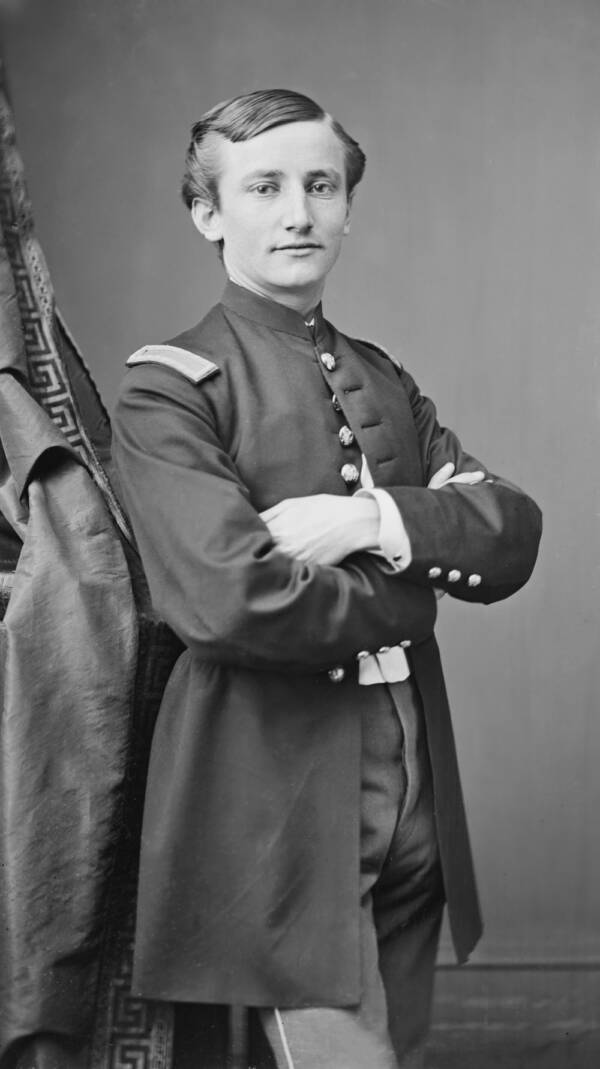
Mathew Benjamin Brady/Library of CongressIn 1871, John Clem re-enlisted in the U.S. Army.
Clem spent the next 44 years of his life in the U.S. Army. He was stationed at Fort Brown in Texas and fought in the Spanish-American War.
John Clem retired from the military in 1915 as the last remaining Civil War veteran in active service. (Several other veterans who had previously retired later re-enlisted to fight in World War I.) He died in 1937 and was laid to rest at Arlington National Cemetery.

Library of CongressA 1922 photograph of retired Major General John Clem.
There, his grave reflects the decision that the the boy from Ohio once made to change his name.
Born John Joseph Klem, he dubbed himself John Lincoln Clem in honor of the president who had first called him to serve.
After learning about John Clem, check out haunting photographs of the youngest soldiers in the Civil War. Then, read about the horrific conditions for prisoners of war at the notorious Andersonville Prison.